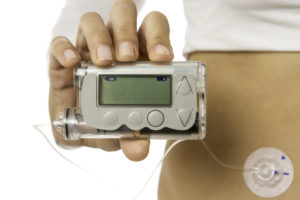
New Developments in Internet of Things (IoT) -Connected Medical Devices and Plastic Assembly – 2023
The fourth industrial revolution holds considerable promise for the internet of medical things (IoMT) and the plastic assembly industry. Currently, the internet of medical things deals with infection tracking, automation of manual processes, and leveraging healthcare data to meet improved patient outcomes.
In 2023, medical device manufacturers will begin leveraging analytics, artificial intelligence, cloud, automation, and big data to drive parts manufacturing. These emerging trends are improving the affordability and efficiency of manufacturing lines, helping operators meet the high demand for medical devices.
On the plastic assembly front, interconnected industries, the emergence of lightweight plastic, and climate action are some key trends. Rising concerns about the environmental impact of plastic material components continue to inform operators and manufacturers about smart manufacturing methods alongside efficiency in plastic disposal.
New Developments in IoT-Connected Medical Devices
So, let’s look at new developments in IoT-connected medical devices and plastic assembly in 2023 and beyond.
Wearables
A marked improvement in circuit miniaturization has helped operators and medical device manufacturers develop wearables such as psychological monitoring devices, smart glasses, bio patches, and ECG monitors.
Medical wearables collect patient data, helping track psychological conditions and leading to improved patient-centered outcomes. Two remarkable improvements in health wearables include chest-worn portable devices and pain-controlled wearables.
Medical Robots
Medical robots are being used to streamline surgical procedures, helping healthcare establishments improve patient safety and enhance the efficiency of medical operations. Operators are using robotic technologies to streamline surgical procedures and increase patient safety.
Programmed robotics are finding new applications in robotic-assisted laparoscopic surgeries. They lead to less blood loss during surgical operations, promote smaller incisions, and help patients recover speedily after surgical procedures.
Immersive Technologies
Advances in medical devices continue to provide videos and images of higher quality and resolution. Improved video and image quality help medical practitioners detect anomalies and make accurate medical evaluations. Higher-quality images afforded by immersive technologies further help overcome the challenge of static representations. Overcoming static images helps clinicians and practitioners to obtain a first-person perspective on medical conditions, especially when depicted in the form of X-rays.
Emerging technologies such as extended reality (XR), virtual reality (VR), and augmented reality (AR) are being integrated to help with medical device product designs. Some leading achievements in immersive technologies include AR-based X-ray and VR-based ophthalmological devices.
Remarkable Improvements in Plastic Assembly Industry in 2023
Alongside revolutionary technologies transforming the healthcare front, plastic assembly has also experienced remarkable improvements outlined below:
- Interconnected factories. Interconnected factories enable operators to achieve economies of scale and collaborate on product and process improvements through collaborations. They collaborate on shared production and manufacturing processes, helping optimize product outcomes.
- Climate action. Global plastic production has grown extensively over the last decade. This growth continues to highlight the pressing need to protect the environment (land, water, and air) against the implications of plastic use and plastic waste. So, alongside a radical focus on climate action, governments are slowly sensitizing populations and companies against plastic use and disposal.
- Lightweight materials. Lightweight additives and resins are at the forefront of lightweight plastic innovations, allowing car manufacturers and similar sectors to drift from metal to plastic components. Shifting from metal components to plastic is a trend that will dominate most industries, especially as operators and manufacturers continue to explore lightweight options earlier on in the DFM process.
Thermal Press – Powering Innovation in Thermoplastic Solutions
At Thermal Press International we specialize in plastic assembly equipment used for heat staking, heat sealing, and film welding applications. Our customer-oriented, consultative approach enables us to offer superior quality and complex solutions that other suppliers cannot, resulting in more productivity, less downtime, and greater peace of mind.
Contact Us or call (925) 454-9800 to speak with a Thermal Press engineer.